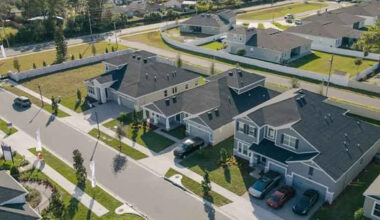The Big Illusion: Price vs. Real Cost
Listing number is simply the opening scene. Ownership—the entire movie—is longer, more expensive, and full of subplots people fail to budget for. Mortgages are one aspect of housing. You’ll also pay property taxes, insurance, closing costs, HOA fees (if applicable), utilities, and constant upkeep. Set aside 1–3% of the home’s worth annually for maintenance. Roofs deteriorate, appliances break, and basements leak at the worst times.
Cars play similarly. The monthly cost may seem low, but insurance, fuel, tires, routine servicing, registration, and parking may add up rapidly, especially in packed cities where parking can feel like rent. The unseen meter of depreciation begins when you leave the lot. Think “total cost of ownership,” not just sticker price or EMI.
Smart buyers tally the all-in monthly cost before falling in love. That single step keeps rosy projections from turning into late-night spreadsheet panic.
Check Your Financial Reputation: Tune Up Your Credit
Your credit profile is the résumé lenders read first. It determines whether you’re in the room—and what rate you’re offered once you get there. Tiny percentage differences compound into enormous dollars over long loans. A stronger score can shave tens of thousands off the lifetime cost of a mortgage and thousands off an auto loan.
You don’t fix credit overnight. Start months ahead: automate on-time payments, pay down revolving balances, and avoid new credit applications. If your score needs rehab, delaying a purchase may be the highest-return “investment” you can make this year. Better credit means better terms, simpler approvals, and more negotiating power.
Be Lender-Ready: Pre-Approval and Shopping the Money
Pre-approval is your permission slip to shop with confidence. It clarifies your price range, signals seriousness to sellers, and speeds up closing when the right place or car appears. It also protects you from heartbreak—there’s nothing worse than falling for a property you can’t finance.
Then, comparison-shop like your future self depends on it (because it does). Don’t just chase the headline rate—examine APR, origination and processing fees, points, required insurance add-ons, and early repayment penalties. Ask about rate locks for mortgages and whether rate buydowns or discount points fit your timeline. Not every bank or non-bank lender prices risk the same way, and small differences become big money over 5, 7, or 30 years.
Considering specialized tools like a house bridging loan in Singapore or other markets? Learn the rules before you play. Bridge financing can be a lifesaver when timing a sale and a purchase—but the costs, timelines, and contingencies demand a clear plan and exit strategy.
Affordability Is a Range, Not a Number
The bank’s maximum is not your goal. You deal with food, childcare, vacation, hobbies, healthcare, and your genuine goals while lenders underwrite their models. A good rule: keep monthly debt payments under 30–35% of your income. That allows for saving, investing, and life’s plot twists.
If your budget only balances when nothing goes wrong, it isn’t a budget—it’s a wish. Build slack into your plan before you commit. Ask yourself if the payment still works during a slow quarter at work, after a new baby, or when a surprise bill arrives.
Rates and Terms: The Levers That Decide What You Really Pay
Interest rate and loan length do most of the heavy lifting on total cost. Fixed-rate loans offer clarity and calm, protecting you from future hikes. Adjustable or floating rates can save money when markets are friendly but will test your nerves—and your wallet—when they aren’t.
Another lever is loan term. Longer terms lower monthly payments and make big purchases easier, but you pay interest for years. A “comfortable” 30-year mortgage can cost much more than a 15- or 20-year one. Your best option is to evaluate cash-flow comfort and lifetime cost, then reconsider if your income grows and a refinance or extra principal payments make sense.
Build the Safety Net Before You Sign
An emergency fund is the difference between a rough patch and a crisis. Aim for six to twelve months of essential expenses, including your mortgage or car payment. That cushion buys you time to pivot through layoffs, health issues, or family needs without putting the house or car at risk.
Be sincere about insurance. Beyond basic plans, consider house coverage limitations, deductibles, flood or earthquake riders, and liability. Compare auto insurance to real-world risk and value. For a quick loan utilising an automobile as collateral, maintenance and insurance are required to maintain value as a safety net.
Buy for the Life You Actually Want
A home or car shouldn’t overshadow your life goals. Retirement, vacation, launching a business, kids’ education, and parent care demand funds and flexibility. Deficit limits possibilities. The “perfect” house that prevents investing, moving, or career risk may look great but be dreadful in practice.
Choose the version that preserves options. Maybe it’s the slightly smaller place with a great layout or the practical trim level over the top-tier package. You’ll thank yourself when opportunity knocks and you’re not handcuffed to a payment.
Call in the Pros When the Stakes Are High
You needn’t be your own underwriter, tax specialist, or market analyst. A knowledgeable mortgage broker, financial planner, or fee-only advisor can help you evaluate structures, map affordability, and spot prepayment penalties, balloon clauses, forced add-ons, and unrealistic income assumptions in the fine print.
If you’re juggling multiple debts, an advisor can sequence paydowns, evaluate refinancing, and design a plan that reduces interest without squeezing your cash flow. Perhaps their greatest value: they’re not emotionally attached to the granite countertops or the V6 upgrade. They keep the math honest when your heart sprints ahead.
FAQ
How much should I budget for home maintenance each year?
Plan on roughly 1–3% of the home’s value annually, adjusting for age, climate, and the property’s condition.
Is it worth delaying a purchase to improve my credit score?
Yes—better credit often unlocks lower rates and fees, saving far more over the loan’s life than the delay costs.
What’s the difference between interest rate and APR?
The rate is the cost of borrowing; APR wraps in many lender fees to show the truer, all-in annual cost.
Should I choose a fixed or adjustable mortgage?
If you value predictability, go fixed; if you can tolerate risk and expect stable or falling rates, an adjustable may save money.
How big should my emergency fund be before buying?
Aim for 6–12 months of essential expenses, including the new mortgage or car payment, to withstand income shocks.
How do I know what price range I can really afford?
Keep total debt under about 30–35% of take-home pay and test your budget against real-life scenarios and unexpected costs.
Are longer auto loans a bad idea?
They lower monthly payments but increase total interest and can leave you “upside down” longer if the car depreciates quickly.
What is a bridge loan and when is it useful?
It’s short-term financing that helps you buy a new home before selling your current one, best used with clear timing and exit plans.






